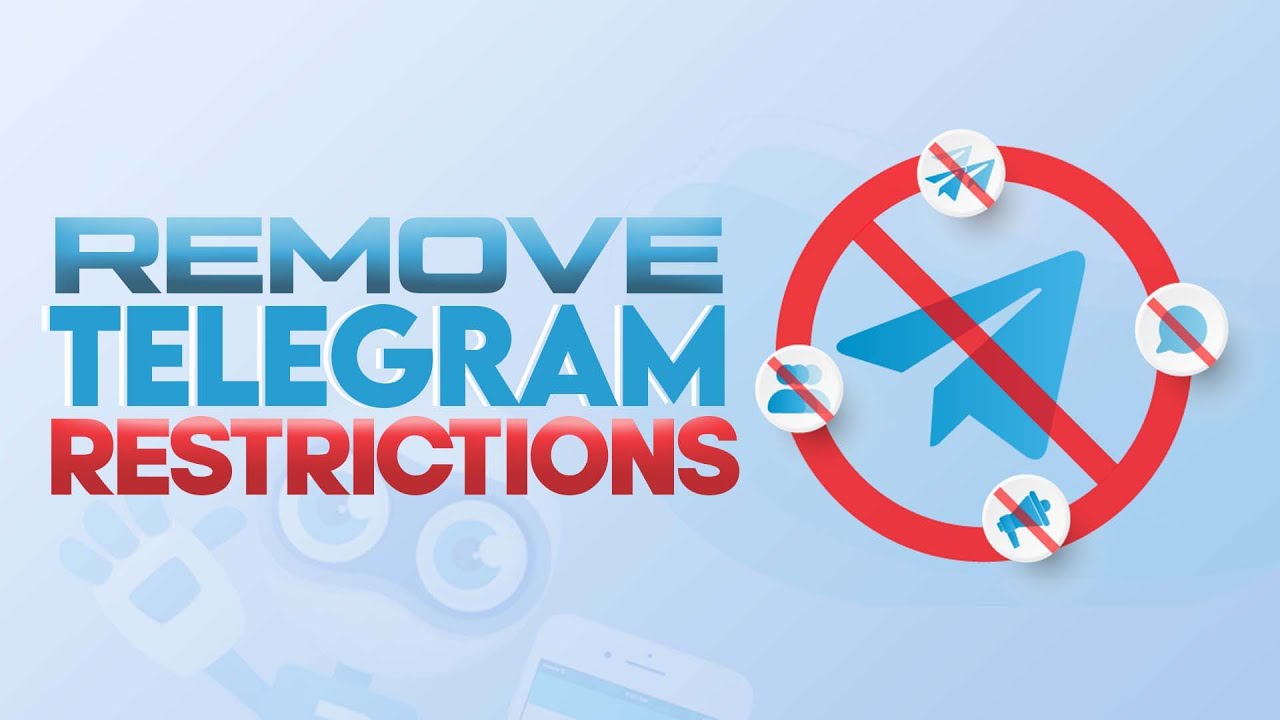In today's digital world, Telegram stands out as a popular messaging app, especially for its privacy features and large group capabilities. However, like many online platforms, it faces copyright restrictions that can limit how users share content. In this blog post, we'll dive into these copyright issues and explore some legal ways to navigate around them. Don't worry; you won't have to play hide and seek with the law!
Understanding Copyright Restrictions on Telegram

Copyright restrictions on Telegram are designed to protect the rights of content creators by preventing unauthorized sharing and distribution of their work. So, what does this mean for you as a user? Let’s break it down:
- What is Copyright?
Copyright is a legal term that grants the creator of original work exclusive rights to its use and distribution. This includes literature, art, music, and other creative content.
- How Does It Apply to Telegram?
On Telegram, sharing copyrighted material without permission from the creator can lead to infringement claims. This applies to:
- Images and videos
- Music tracks
- Text documents
- Software or applications
- Consequences of Copyright Infringement
Engaging in copyright violations can have serious implications, including:
- Account suspension or bans
- Legal action by copyright holders
- Monetary fines
Understanding these restrictions is crucial when navigating the vast universe of Telegram channels, groups, and bots. Respecting copyright not only keeps you in the clear but also supports artists and creators, allowing them to thrive. Stay tuned as we explore some legal ways you can share or access content while respecting these rights!
Legal Methods to Access Restricted Content

Navigating the choppy waters of copyright restrictions can be tricky, especially when it comes to popular messaging platforms like Telegram. But fear not! There are legal methods to access restricted content that can keep you out of hot water.
Firstly, it's crucial to understand the role of fair use. Fair use allows you to use copyrighted material without permission for specific purposes, such as education, commentary, or research. However, the boundaries of fair use can be unclear, and relying solely on it can be risky. Always assess whether your usage aligns with this doctrine by considering factors like:
- The purpose of use: Is it commercial or educational?
- The nature of the copyrighted work: Is it factual or creative?
- Amount used: Are you using a small or substantial portion?
- Effect on the market: Does your usage affect the market value of the original work?
Another legal method is to obtain permission. You can reach out to the original copyright holder and ask for access or permission to use the content. This not only keeps you on the right side of the law but also shows respect for the creator's rights. Don’t hesitate to explain why you want to use their work; often, creators appreciate when their work is used thoughtfully.
A third option is leveraging legal exemptions under national and international copyright laws. Sometimes specific types of content or a subset of users might have access regardless of general restrictions. Always research the applicable laws for your country.
Utilizing Public Domain and Creative Commons
If you're looking for ways to bypass content restrictions legally, utilizing public domain works and content licensed under Creative Commons can be a game-changer. These resources provide a treasure trove of material that you can access without worrying about copyright issues.
Public Domain refers to creative works whose copyrights have expired, been forfeited, or are inapplicable. This means you can freely use, share, and modify these works without seeking permission. Here are a few examples of what you might find in the public domain:
- Classic Literature: Works by authors like Shakespeare or Mark Twain.
- Historic Films: Old movies that are no longer protected by copyright.
- Music Compositions: Many classical compositions are now public domain.
Creative Commons, on the other hand, is a licensing system that enables creators to grant permission for others to use their work under specific conditions. There are several types of Creative Commons licenses, each with its own set of guidelines. The main ones include:
| License Type | Description |
|---|---|
| Attribution (BY) | Allows others to use, distribute, and modify the work, as long as they credit the original creator. |
| Non-Commercial (NC) | Permits usage but restricts any commercial application. |
| Share-Alike (SA) | Allows adaptations, provided they are licensed under identical terms. |
| No Derivatives (ND) | Allows others to use the work, but no modifications can be made. |
By taking advantage of public domain and Creative Commons resources, you can access a wealth of knowledge and creativity without the risk of infringing on copyright. Just always double-check the licensing terms to ensure you're in the clear!
5. Engaging with Copyright Holders
Engaging with copyright holders might sound a bit daunting, but it's actually a crucial step if you want to legally access content on platforms like Telegram. Many creators, whether they are musicians, filmmakers, or authors, are often open to discussions about their work. You might be surprised to find that some artists appreciate the support and are willing to share content under certain conditions if you approach them respectfully. Here's how to go about it:
- Identify Copyright Holders: Start by figuring out who owns the rights to the content you're interested in. This could be an artist, a small production company, or even a record label.
- Reach Out: Don't hesitate to send them a message! You can do this through social media, email, or even professional platforms like LinkedIn. Be polite and concise about your request.
- Explain Your Intent: Clearly state why you want to access their content. Whether it's for personal enjoyment, research, or educational purposes, let them know your intentions.
- Negotiate Terms: If they are receptive, discuss how you can legally use their content. This might involve various forms of permission or even paid licensing.
By taking this proactive approach, you're not only respecting copyright laws but also fostering relationships with creators. Plus, it might lead to exciting collaboration opportunities!
6. Using Virtual Private Networks (VPNs) Legally
When it comes to accessing geo-restricted content on Telegram or other platforms, a Virtual Private Network (VPN) can be a valuable tool. But here's the kicker: it's essential to use VPNs legally. Let’s explore how to do just that:
- Understand the Basics: A VPN encrypts your internet connection and routes it through a server located in a different country. This can help you access content that might be restricted in your region.
- Select a Reputable Provider: Not all VPNs offer the same level of service. Look for a VPN that is transparent about its privacy policies and has a good reputation among users. Check for reviews and comparisons to find the best fit.
- Be Aware of Local Laws: Different countries have various regulations governing VPN usage. Always be informed about the legal standing of using a VPN in your country to avoid any complications.
- Use Responsibly: While a VPN can provide access to restricted content, make sure you don’t use it to infringe on copyrights. Always respect the terms of service of the content you're trying to access.
Utilizing a VPN can be a game changer for accessing content online, provided it’s used thoughtfully and within the legal framework. So, go ahead, explore the world of VPNs, and enjoy your Telegram experience responsibly!
7. Alternatives to Telegram for Sharing Content
If you've found yourself frustrated with the copyright restrictions on Telegram, don't worry! There are plenty of alternative platforms out there that allow you to share content more freely. Let’s explore some of the most popular ones and see what they have to offer:
- Discord: Originally designed for gamers, Discord has evolved into a community platform where you can share content in dedicated servers. You can create channels for different types of content and it's generally more relaxed about copyright issues, although you should still remain within legal limits.
- Signal: Known for its privacy features, Signal allows secure messaging and file sharing. While it might not have the same broad user base as Telegram, its focus on security makes it a great option for sharing sensitive content.
- WhatsApp: Owned by Facebook, WhatsApp is a widely-used messaging platform that allows you to share images, videos, and documents. However, be mindful that it does have some restrictions depending on the content, especially regarding copyright.
- Mastodon: This decentralized social network operates in a similar way to Twitter but is made up of various independent servers. Users can share media and engage in discussions with different communities, making it a fantastic alternative for sharing content without stringent restrictions.
- Facebook Groups: Although Facebook has various copyright policies, its groups offer a way to share content within specific communities. It encourages sharing and discussions but pay attention to the group's rules regarding copyright.
Choosing the right platform can depend on the type of content you wish to share and your target audience. Make sure you do your research to find a platform that aligns with your needs!
8. Conclusion
Navigating copyright restrictions can often feel like an uphill battle, especially on platforms like Telegram where rules can feel a bit stringent. However, as we've discussed, there are various alternatives available that cater to different needs and preferences for sharing content.
Whether you gravitate towards the community feel of Discord, the privacy of Signal, or the broad reach of WhatsApp, there’s a suitable platform for you. Remember, each platform comes with its own set of guidelines and limitations, so staying informed about their policies is crucial.
Ultimately, sharing content should be an enjoyable experience—one that fosters creativity and connects people. By exploring the alternatives to Telegram, you’ll likely find the perfect fit for your content-sharing needs while ensuring you’re respecting copyright laws.
So, step out and explore the options available to you! With some knowledge and a well-thought-out strategy, you can share your favorite content without running into those pesky restrictions. Happy sharing!
 admin
admin








